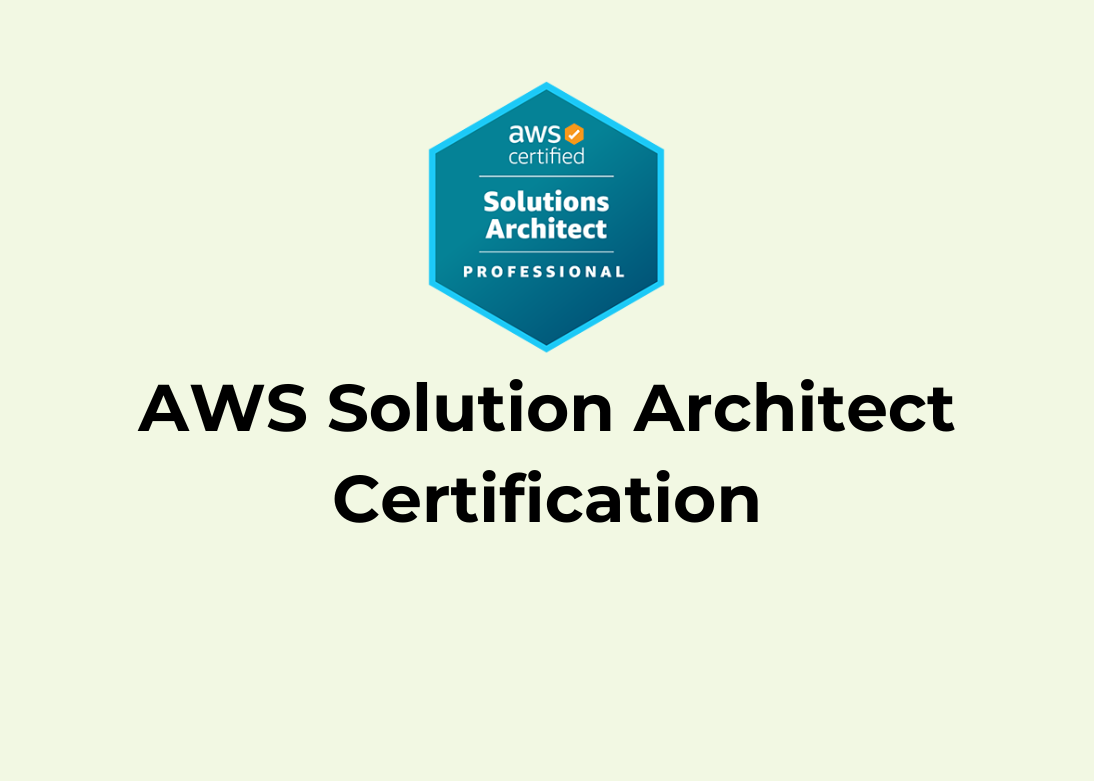AWS Solution Architect Certification Training
in Cloud ComputingAbout this course
Advance your cloud computing career with our AWS Solutions Architect Associate Live Training Course, meticulously designed to equip you with the skills and knowledge required to excel in cloud architecture. This course is ideal for professionals aspiring to become proficient in designing and deploying scalable, reliable, and secure applications on the AWS platform, this course will help you prepare for the AWS Certified Solutions Architect—Associate exam SAA-C03.
- Learn cutting-edge Cloud Architect techniques to advance your tech career.
- Achieve confidence on your first attempt by passing the AWS Solutions Architect exam.
- As a skilled Solutions Architect, discover profitable career opportunities.
- Work with outstanding AWS-certified professionals to become a cloud guru.
Curriculum
INTRODUCTION TO CLOUD COMPUTING
- Introduction To Cloud Computing Why Cloud Computing?
- Benefits Of Cloud Computing
- Public Cloud Private Cloud Hybrid Cloud Community Cloud
- Infrastructure As A Service Software As A Service Platform As A Service
VIRTUALIZATION
- What Is Virtualization?
- Virtualization and Cloud Computing Types Of Virtualization Virtualization Terminologies Hypervisor
AMAZON WEB SERVICES (AWS)
- Introduction To AWS
- Introduction To The AWS Products
- Regions And Availability Zones Signing Up For AWS
- AWS Free Usage Tier
- Introduction AWS Management Console
EC2 INSTANCES
- Understanding AMI
- Launching Your First AWS Instance On-Demand Instance Pricing Reserved Instance Pricing
- Spor Instance Pricing Spot Instance Pricing Setting Up Security Security Group Choosing The AMI Creating The New
AMI IP Addresses Scheme Public And Private IP’s - Deploying A New Instance From The Created AMI AMI Migrations
- Key Pairs Elastic IP’s
- Exercise(S)
ELB (ELASTIC LOAD BALANCER)
- Introduction To ELB Basic ELB Concepts Internet-Facing ELB VPC-Facing ELB
- Create An ELB (Elastic Load Balancer) Adding And Removing Instances On ELB
- Exercise(S)
EBS (ELASTIC BLOCK STORAGE)
- Create EBS Volumes Delete EBS Volumes
- Attach And Detach EBS Volumes Mounting And Un-Mounting EBS Volume Creating And
Deleting Snapshots Creating Volumes Fromsnapshots - Exercise(S)
S3 (SIMPLE STORAGE SERVICE) AND AMAZON GLACIER STORAGE
- Object Storage Versus Traditional Block And File Storage What Is S3?
- RRS (Reduced Redundancy Storage) S3 Durability And Redundancy
- S3 Buckets
- S3 Uploading Downloading S3 Permissions
- S3 Object Versioning S3 Lifecycle Policies Amazon Glacier
- Exercise(S)
AMAZON VIRTUAL PRIVATE CLOUD (AMAZON VPC)
- Introduction
- Amazon Virtual Private Cloud (Amazon VPC) Subnets
- Route Tables Internet Gateways
- Dynamic Host Configuration Protocol (DHCP) Option Sets Elastic IP Addresses(EIPs)
- Elastic Network Interfaces(ENIs) Endpoints
- Peering Security Groups
- Network Access Control Lists (ACLs)
- Network Address Translation (NAT) Instances And NAT Gateways
- Virtual Private Gateways(VPGs), Customer Gateways(CGWs), And Virtual Private Networks (VPNs)
- Exercise(S)
CLOUD WATCH
- Cloudwatch Dashboard Configuring Monitoring Services Settings Thresholds
- Configuring Actions
- Creating A Cloudwatch Alarm Getting Statistics For EC2 Instances Monitoring Other AWS services Configuring Notifications
- Integrating Cloudwatch With Autoscaling
- Exercise(S)
SIMPLE NOTIFICATION SERVICES (SNS)
- What Is SNS? Creating A Topic Create Subscription
- Subscribe To The Subscription (SQS, Email, HTTP)
- Exercise(S)
AUTO-SCALING
- Horizontal Vs, Verticalscaling Bootstrapping
- Create A Launch Configuration Create An Autoscaling Group
- Create A Policy For Your Auto Scaling Group
- Set Up An Auto-Scaled, Load-Balanced Amazon EC2 Application
- Exercise(S)
AWS IDENTITY AND ACCESS MANAGEMENT (IAM)
- Creating Users AndGroups Applying Policies Password Policy
- Roles
- Command Line Management
- Exercise(S)
RELATIONAL DATABASE SERVICE(RDS)
- Selecting The Database Type (MySQL) Configuring The Database
- Creating Database Configuring The Backups
- Configuring The Maintenance Windows Connecting To Thedatabase
- Exercise(S)
DYNAMO DB
- Creating a Dynamodb Configuring alarms Adding data manually
- Exercise(S)
CLOUD FORMATION
- What Is Cloud Formation? Deploying Template Create Stack
- Delete Stack
- Provisioning Application Resources With CloudFormation
- Exercise(S)
CLOUD FRONT
- Use Of CloudFront
- Creating A CloudFront Distribution
- Hosting A Website Of CloudFront Distribution Implementing Restrictions
- Configuring Origins Andbehaviors CND (Content Delivery Network)
- Exercise(S)
DOMAIN NAME SYSTEM (DNS) AND AMAZON ROUTE 53
- Domain Name System ( DNS) Overview Understanding DNS Records
- Route 53 Overview Routing Policies Health Check
FAQ
Comments (0)

.png)







